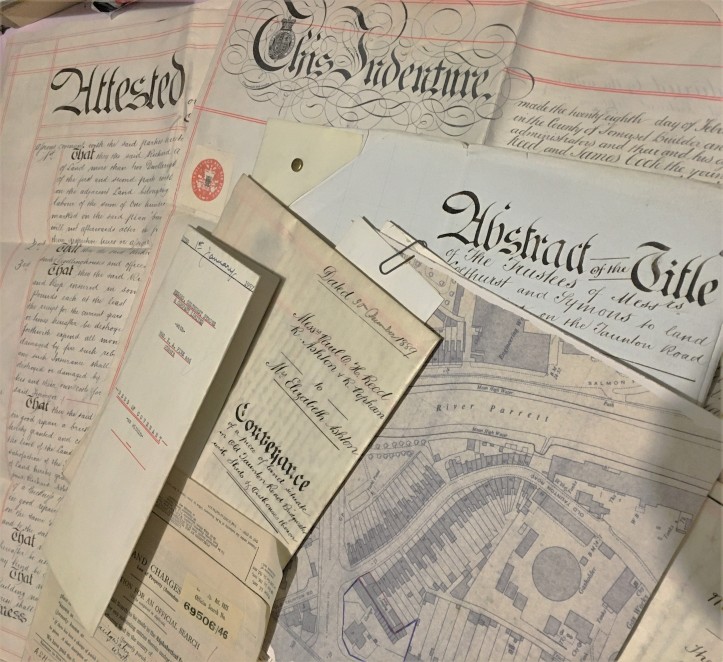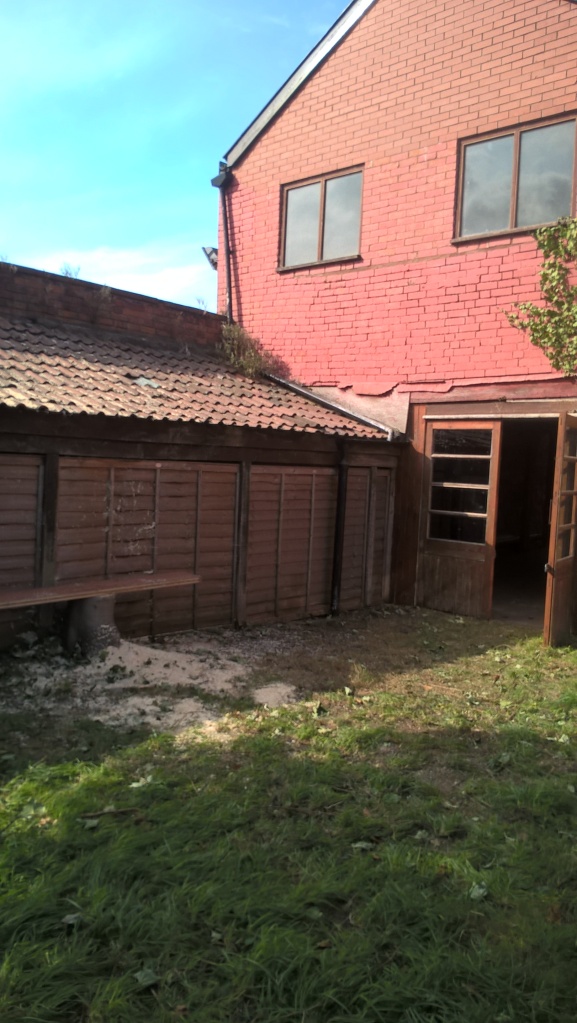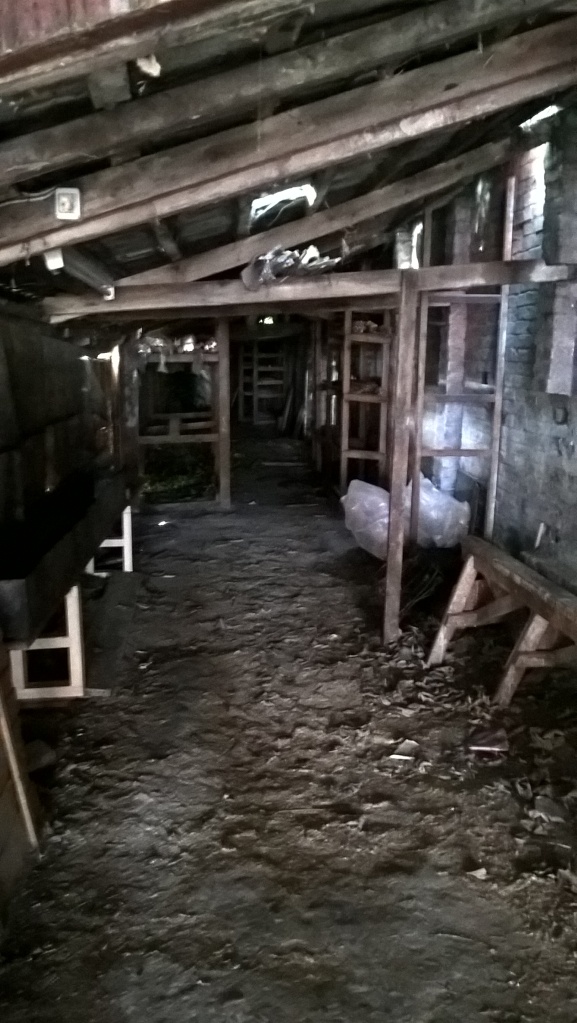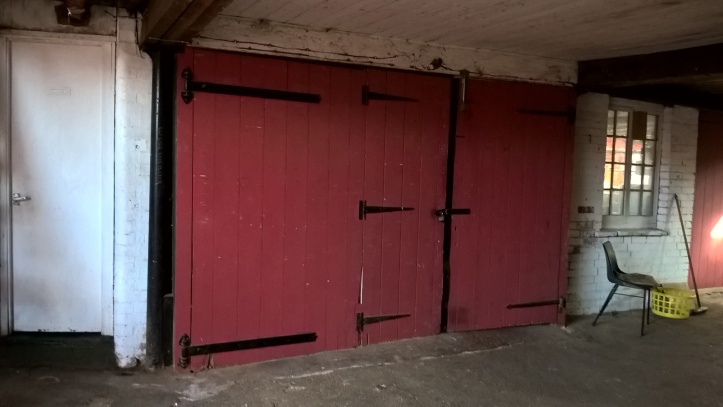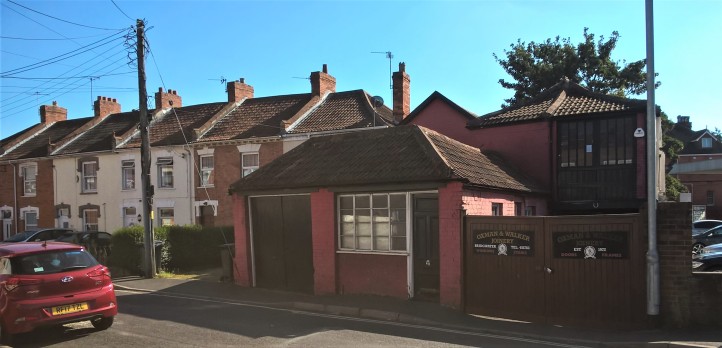
The history of this old building has been revealing itself bit by bit during the purchase and renovation of the buildings it all started long ago in a field by the river south of Bridgwater there could be seen the old chapel of St. Saviours the first building you saw as you rode into the town on the Taunton road this account written by John Leland in Somersetshire 1540-1542
“Entering into Bridgwater I passid by a Chapelle of S. Salvior standing o the Ripe of the Haven.”
Some years later the chapel was gone but a house had been built named after the chapel called St. Saviours House this big house had a coach house and stables in the fields to the south of the new building built in a gothic revival style with splendid gothic arched windows, the Coach house was well built with curved walls brick cobbled floor and large coach house doors with a coachman’s dwelling above with an upstairs fireplace and tiled roof with a tiled roof stable block down the long wall all the way down the garden which no doubt was a stable yard in those times.
In 1882 a dwelling house was built adjoining the coach house and in approximately 1910 the top of the coach house was extended out to create a covered yard and big workshop upstairs. I surmise that the motorcar may have had the effect of making the coach house redundant and it then appears to have been a builders yard for many years. The Victorian terrace was constructed adjoining the house next to the coach house and winds its way down the old Taunton Road a new Taunton road was constructed with grand Victorian villas It was a very busy time in Bridgwater brick and tile industry boomed and the Bridgwater & Taunton canal, railway and the river Parrot carried its products far and wide. A great amount of all sorts of goods & products were also imported like coal from wales and so it is said the first imported pineapple into the country arrived here at Bridgwater docks.
At some point after the industrial revolution St. Saviours house was partially demolished and parts of the building were incorporated into Blake hall and a small terrace was built across to Blake gardens on the edge of the river called St. Saviours Avenue.
The main Bridgwater church St Mary’s proudly had the tallest spire for miles around for many years and the wooden ladders needed to scale this famous height were kept at the coach house all along the long wall at the back of the stable block I call the long gallery you can see the metal supports sticking out of the wall that held the ladders, when the steeple jacks needed them they would march down to the coach house to fetch them and carry them back up to the church must have been quite a sight. The town grew so fast in the time of the poets Coleridge, Shelley and their visiting friend William Blake that St. Mary’s and all the chapels were not enough for the Christian community and an overflow church was built opposite the site of St. Saviours House but this was called Holy Trinity and although well used to start with fell out of favor for a while was then brought back into use in 1876. In the 1950’s the congregation once again fitted into St. Mary’s, Holy Trinity fell into ruin and in 1958 the overflow church was demolished. The pews and furniture moved to the new church built on Hamp estate in 1961 to serve the needs of the south of the town now grown well beyond its old boundaries.
In the early 1960’s the Broadway was built to improve traffic flow through the town cutting across the Old Taunton road to a new road bridge over the river. The Coach house was sold with much of its contents then in the year 1972 it was rented out to a start up carpentry/joinery workshop making windows, doors and stairs called Oxman & Walker. One of its near neighbors was a lido but by the time I got to Bridgwater over 20 years ago that site was gone replaced with a Safeways supermarket, the supermarket is now a Morrisons store. Oxman & Walker worked from the site for more than 40 years making quality bespoke wood products some of which can be seen below.
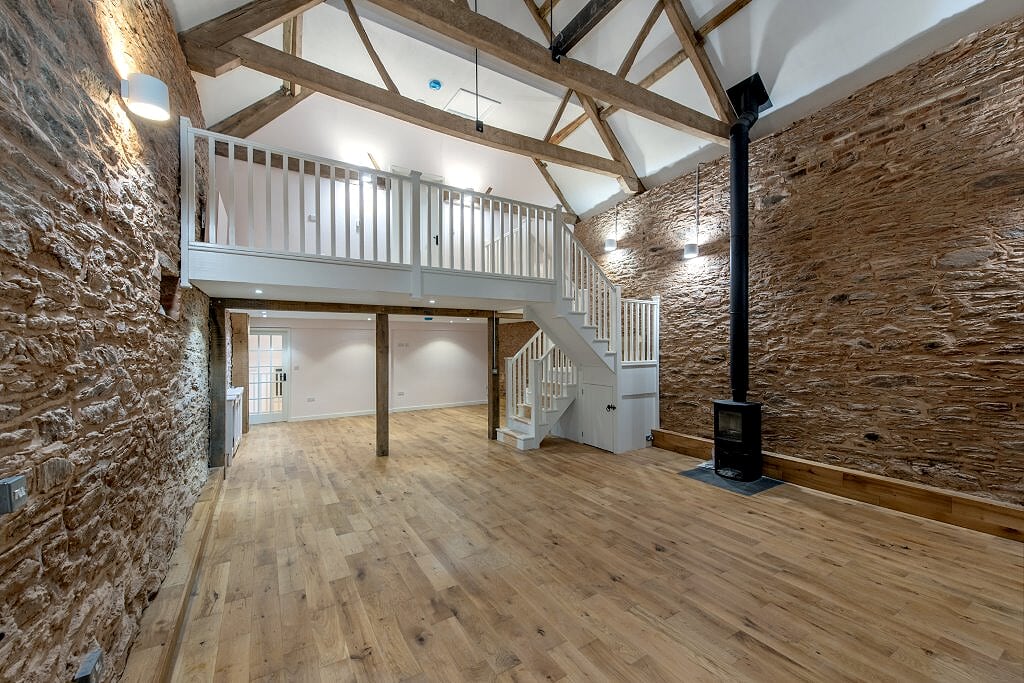
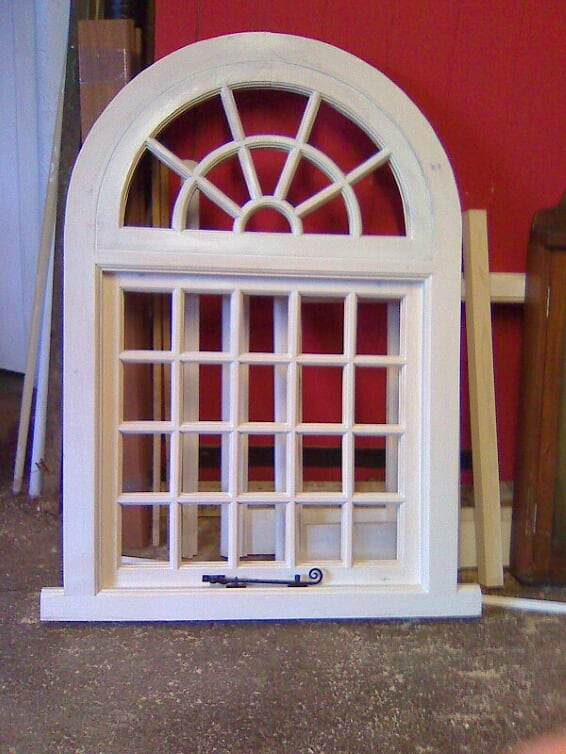

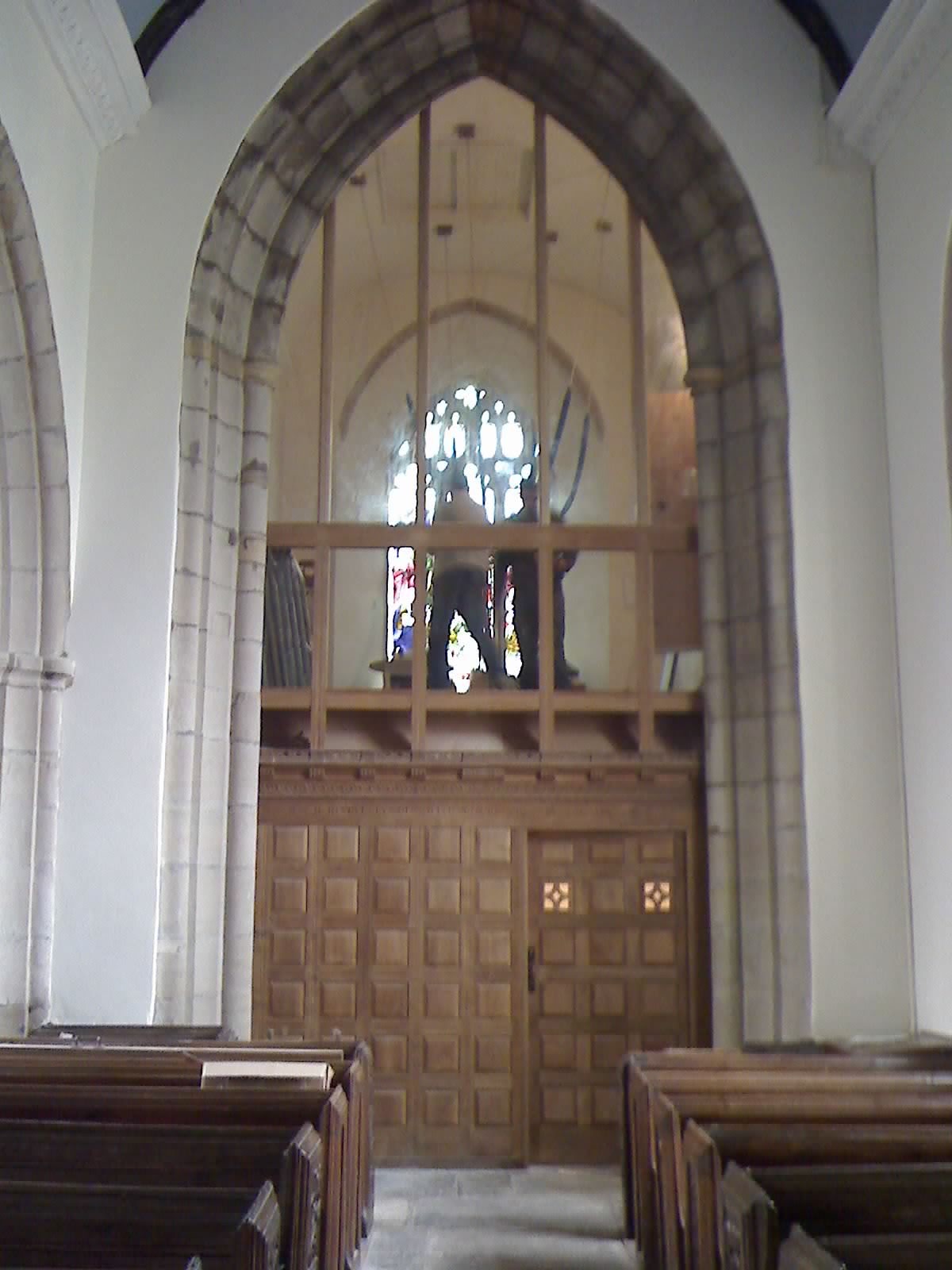


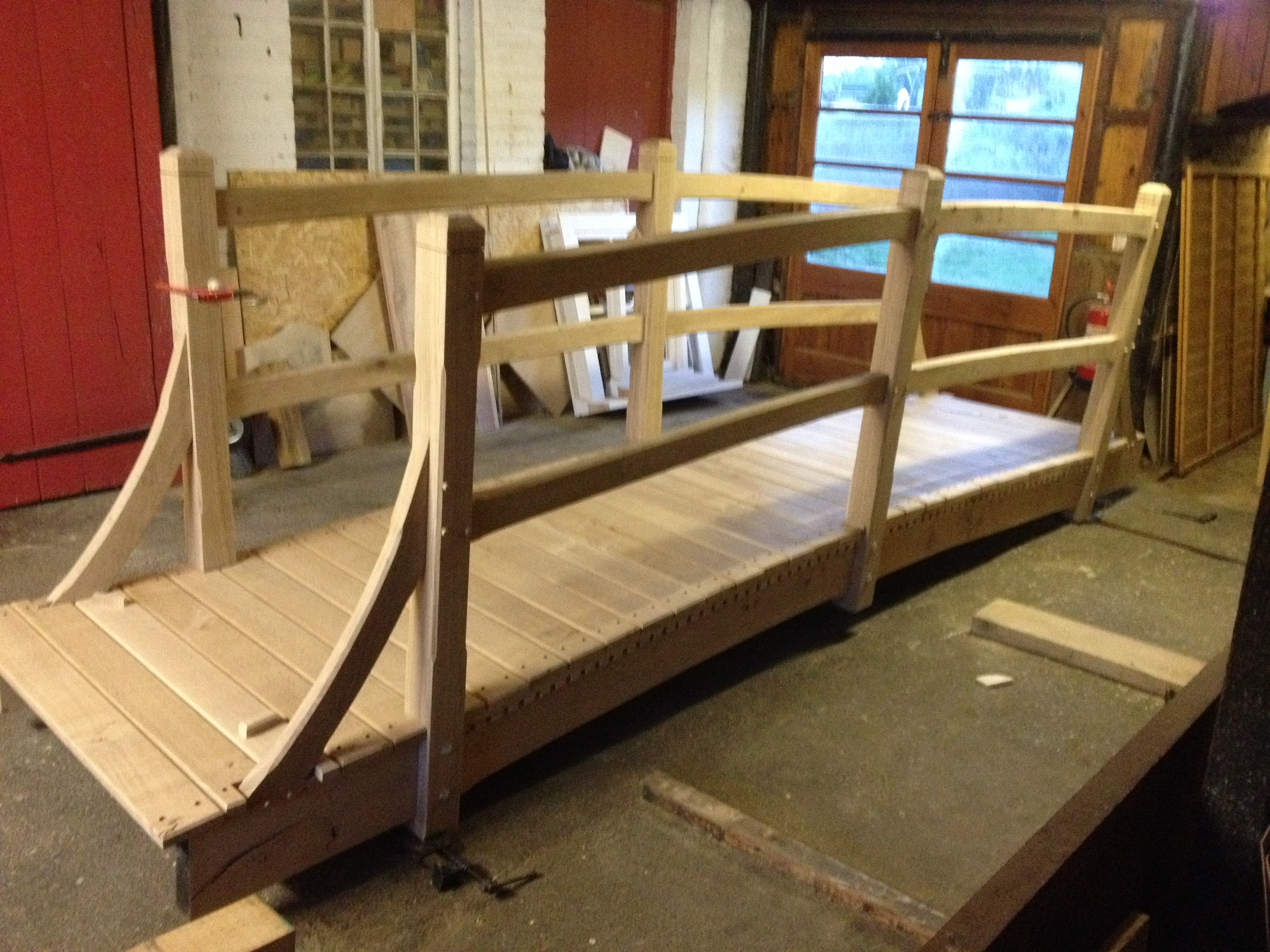

The Gallery acquired the site in August 2019 – I thought it would be far better to rescue the old building, transform it in to a gallery rather than see it disappear no doubt knocked down and replaced with modern flats. The building really needed some urgent attention especially the roof, I discovered its true age and history I also discovered that the building was rescuing me in return and was in fact the coach house and stables of St. Saviours house. I started the blog from the very beginning, you would not believe the amount of sawdust!
